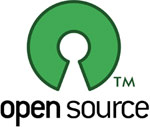 The open source movement is a popular one, and it’s certainly made its mark on the software landscape. But where has it made its biggest mark? What is the most successful open source endeavor of all time?
The open source movement is a popular one, and it’s certainly made its mark on the software landscape. But where has it made its biggest mark? What is the most successful open source endeavor of all time?
Actually, when you see it as a whole, isn’t the Web the biggest open source success of them all?
Perhaps the most famous example is the LAMP stack that lies behind so many websites, i.e. Linux, Apache, MySQL and PHP. But there’s so much more when you think about it.
Here are some of the open source projects that make the Web tick.
Web browsers
While Microsoft’s closed source Internet Explorer still has a big share of the web browser market, open source alternatives are just as common these days, and they are growing. We have Mozilla’s Firefox, which is open source, and then there’s the rapid rise of Webkit-based browsers such as Safari, but most notably Chrome.
Add to this the mobile Web, where Webkit powers the browsers on iPhone, Android and Blackberry.
Web server software
The most-used web server software by far is Apache, which is open source, and a lightweight alternative called nginx has become quite popular in recent years. In fact, two out of the three top web servers are open source (the exception being Microsoft’s IIS at a distant number two).
Then there’s plenty of other server-side plumbing that is open source. For example, many high-traffic websites use Varnish as a caching layer towards website visitors, and Memcached as a caching layer against the website’s database. And these are just two examples of many.
Scripting languages and web frameworks
Most of the programming and scripting languages used on the Web, like PHP, Perl, Python, Ruby, are open source projects.
But few sites start completely from scratch. There are literally hundreds of open source content management systems and web frameworks out there to help developers, for example WordPress, Drupal, Ruby on Rails, Django, Joomla! and more.
Databases
The open source software MySQL is by far the most popular database choice for websites. There are also other open source alternatives, for example PostgreSQL, not to mention a host of open source “NoSQL” options that are cropping up lately.
Oh, and while we’re talking about plumbing, we must not forget one of the very basics we rely on every single time we use anything on the Web or the Internet:
DNS
The Web (and the whole Internet for that matter) would be pretty useless without the Domain Name System. You know, that thing that makes it possible for you to use names like example.com instead of IP addresses. BIND is pretty much the de facto standard software for DNS servers (a.k.a. name servers), and is, as you might guess by now, open source.
Server operating systems
All those websites have to run on servers, and open source dominates here as well. While Windows dominates on the desktop, the servers our websites run on mostly use Linux, which is open source. Other popular options are freeBSD and OpenBSD.
The open source appeal
It’s not so strange that open source software has become so popular when in many cases it can provide quality alternatives to commercial, closed source software, but for free. Free is a hard price to beat.
The Web would most likely have had a much harder time becoming widely accepted without all this freely available software to run it all on.
Please note that we’re not saying that there isn’t any closed source on the Web. There obviously is. But the only real exception from the open source domination of the Web, statistically speaking, is Microsoft’s stack of Windows-based alternatives.
Other than that, you usually need to go really deep to get into more proprietary closed source technology, like the operating systems on routers and such. But that’s the Internet, not the Web.
Final words
Thanks to the rise of the Internet in the 80s, facilitating communication, collaboration and sharing, the open source movement blossomed. When the Web was born on top of the infrastructure of the Internet in the 90s, the open source movement was already in place to help.
No one can deny that open source powers the majority of the Web. Open source and the Web live in a symbiotic relationship, feeding off each other, nurturing each other.
That’s why we think that the Web is arguably the greatest open source success to date. (Not to take anything away from Tim Berners-Lee.)


























